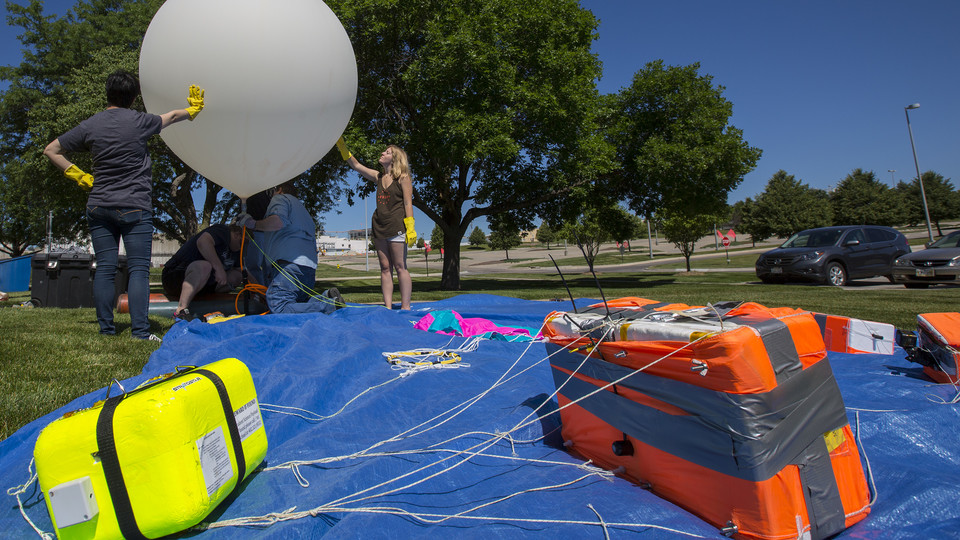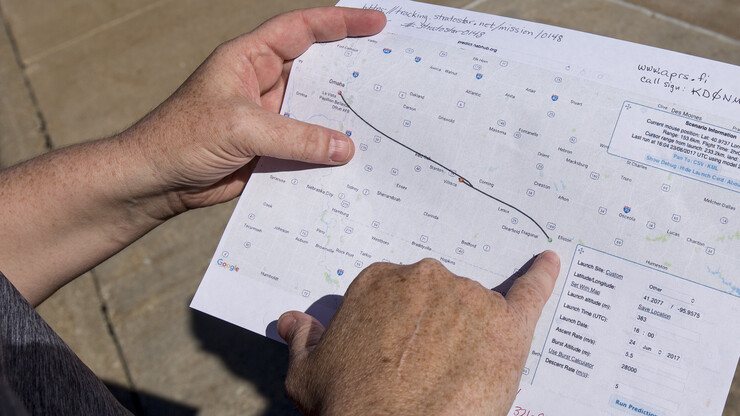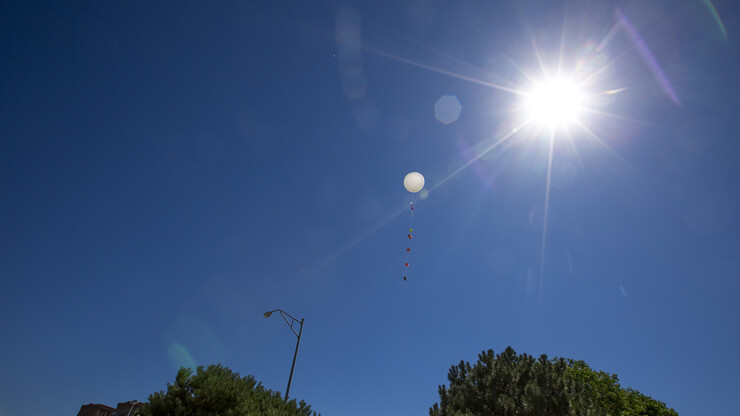· 4 min read
Project takes to the sky for eclipse study

A high-flying research team led by Nebraska’s Michael Sibbernsen is part of a NASA-funded project that will study the upcoming total solar eclipse.
Through his work as special projects coordinator for the NASA Nebraska Space Grant program, the physics and astronomy lecturer at the University of Nebraska–Lincoln is part of a national project that, during the Aug. 21 eclipse, will launch high-altitude balloons to collect data and stream live video from along the path of totality.
The Nebraska portion of the project will launch balloons from the grounds of the Stuhr Museum in Grand Island. The first balloon, which will be released around noon, will carry tracking devices and a specially-designed payload that will collect environmental data and photographs while streaming live video of the eclipse path. A second balloon will carry student-developed experiments, including an Iowa State University astrobiology project that is studying the survivability of bacteria at different altitudes.
“The eclipse project is the brainchild of the Montana Space Grant program, which came up with the idea to launch multiple balloons nationwide, each sharing the same payload and broadcasting live video for people to watch,” Sibbernsen said. “We’re pretty excited to be a part of this history-making project, which will provide a unique eclipse experience to the entire world.”
The work is an outreach of NASA Nebraska’s High Altitude Balloon Program, which Sibbernsen co-leads with his wife, Kendra Sibbernsen, a teacher of physics and astronomy and Metropolitan Community College in Omaha. As project leaders in the last five years, the Sibbernsens have worked with students from elementary school to college levels to successfully launch more than 60 high-altitude balloons carrying a range of science experiments.
“These launches are an entry-level and simple way to introduce students of all levels to the concepts of conducting space — or, in our case, near space — research,” Sibbernsen said. “The level of the experiments depends on the age of the students involved, but each launch offers a similar experience — the excitement of the launch, chase and recovery, followed by going through the scientific process and converting the data collected.”
For safety reasons, each balloon payload is limited to a total of 12 pounds — including the weight of the balloon and a parachute to slow the eventual descent. The balloons soar between 75,000 to 110,000 feet, which is in the near-space region of the atmosphere and above altitudes frequented by airplanes.
Experiments range from the elementary, studying the effects of altitude on hard candy and/or marshmallows (which expand due to decreased air pressure), to the more advanced, including NASA payloads like the Iowa State study and experiments that measure cosmic radiation. A recent launch from Metropolitan Community College — which was a test run for the second launch on the day of the eclipse — included undergraduate projects examining solar panels, carbon dioxide monitoring and a specialized camera system.
After launch, the balloons are tracked via two methods — a program that streams positioning data online and a back-up system that broadcasts via traditional ham radio frequencies. Details about each of the NASA Nebraska’ balloon launches, following the events from pre-launch to recovery, are made available online.
“One of the best part of the Nebraska High-Altitude Balloon project is connecting students to actual science and offering an exciting ‘gee-whiz’ experience that you really can’t get anywhere else,” Sibbernsen said. “It is a unique way to experience the scientific process in action. And, we know for a fact that it has gotten a number of kids to look toward aerospace engineering as a possible career path.”
For additional information on the national eclipse ballooning project, click here.










